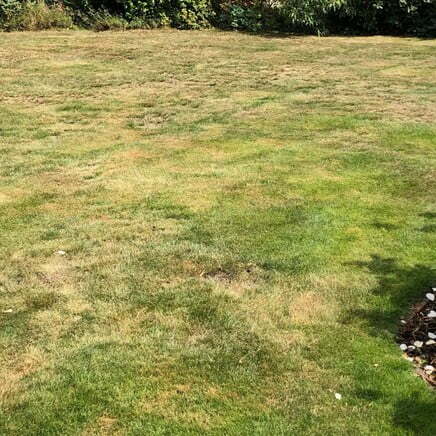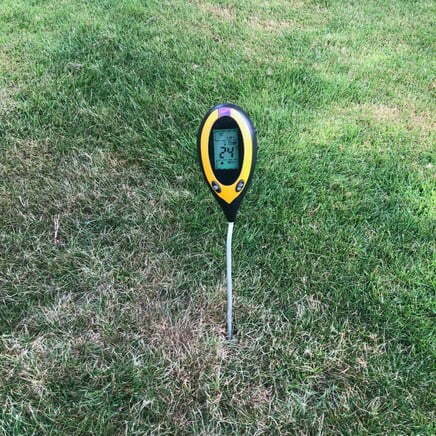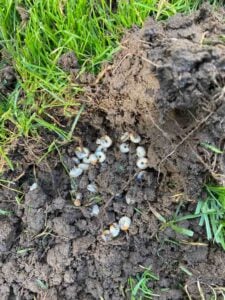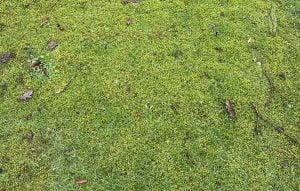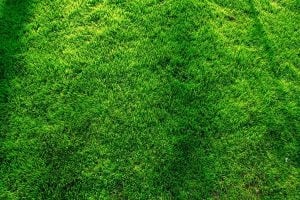Just like plants and shrubs in your garden, your lawn is made up of thousands of tiny plants that need water to keep it healthy. Find out how to water your lawn to keep it looking great.
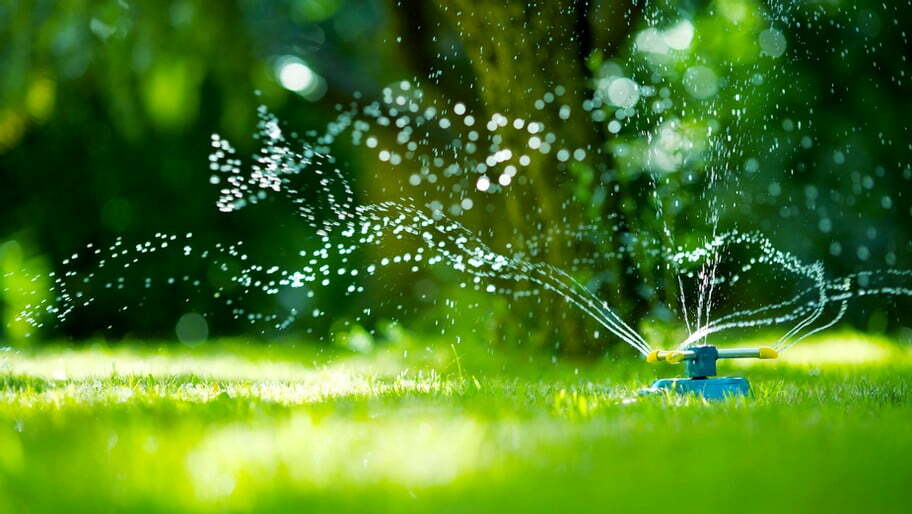
Despite many rainy periods of the year, it can be very dry for weeks at a time in the South East. If the dry spells happen in Spring, the lawn enters the hot and dry Summer period at a disadvantage and will go brown and dormant much sooner.
Why water the lawn? Rain will usually provide most of the water, but the climate is changing with drier Springs and hotter Summers. During those periods, the lawn may loose more water than is put back in the soil (around 3mm water each day it does not rain, more in hot dry conditions). This leads to less healthy grass that will look pale, turn brown and eventually die. We can restore those lawns but it’s far cheaper and less hassle for you to water enough to avoid the damage setting in.
Watering recommendation
Watering weekly with a sprinkler to a saturation level of 2.5cm (1 inch) will put back the water the lawn may have lost that week. A simple rain gauge will tell you when you have reached the required amount. That amount of water equates to 2.5m2 for a 100m2 lawn. For just £8.00 we can supply a quality rain gauge on our next lawn treatment visit. Contact us to ensure you get one reserved.
Top tips:
- Use our handy watering tool to find out how little it may cost to water your lawn.
- Always use a sprinkler. It will give efficient, even coverage. Unless for a tiny area, don’t use a hand spray hose attachment as you will need to stand still for 30 minutes or more holding the hose on the same spot. Experience tells us you won’t water correctly doing that.
- Water early morning for best results. Evening watering is better than during the day but when its warm and humid you can introduce lawn diseases such as red thread. During the day, water will evaporate faster so you’ll need to water more and also risk scorching the grass in hot sunny wether.
- Remember to check the soil. It the soil is dry or cracking, more watering is needed. Ideally it will be moist to the touch. Sandy soils will dry out faster than clay. You can cut a small square of soil and see how far down the water has reached. If it’s only in the top 2cm you need to water for longer and more often. Grass roots will grow to where water is, so the deeper the water goes, the more robust you lawn will be.
- Adjust the watering frequency for the weather. When it hot and dry you may need to water several times a week.
- Keep the grass slightly longer. Raise the mower cut height a setting or two. Longer grass will retain more water, look greener and provide shade for the soil so it will dry out less.
- We can apply our lawn hydration treatment to make your watering more efficient, leading to a greener, more healthy lawn.
- Obvious tip! If we have a hosepipe ban do not water the lawn. Consider using recycled rainwater or household brown water.

